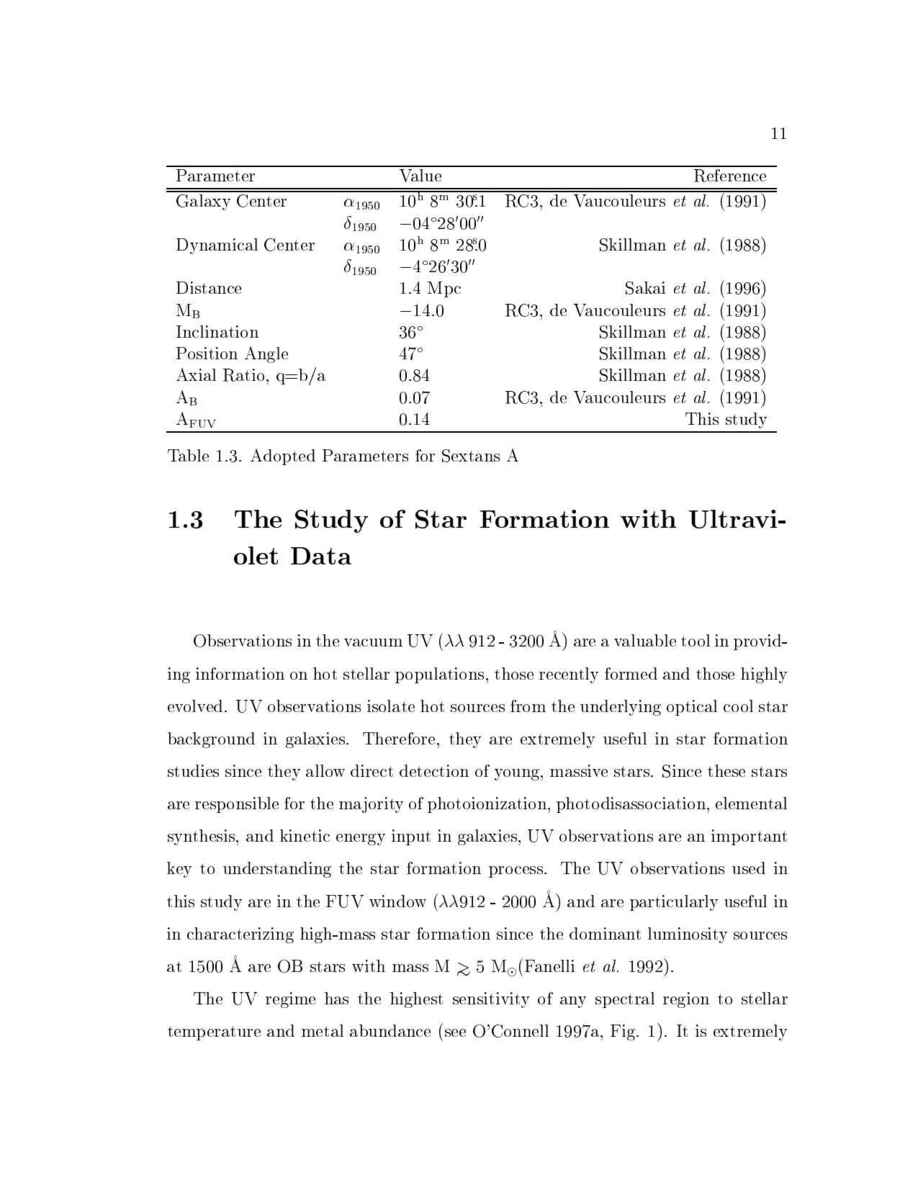Astronomical Applications Department, U.S. Naval Observatory thesis Page 25

11
Parameter
Value
Reference
Galaxy Center
1950
10
h
8
m
30
:
s
1 RC3, de Vaucouleurs
et
al.
1991
1950
,
04 28
0
00
00
Dynamical Center
1950
10
h
8
m
28
:
s
0
Skillman
et
al.
1988
1950
,
4 26
0
30
00
Distance
1.4 Mpc
Sakai
et
al.
1996
M
B
,
14.0
RC3, de Vaucouleurs
et
al.
1991
Inclination
36
Skillman
et
al.
1988
Position Angle
47
Skillman
et
al.
1988
Axial Ratio, q=b a
0.84
Skillman
et
al.
1988
A
B
0.07
RC3, de Vaucouleurs
et
al.
1991
A
FUV
0.14
This study
Table 1.3. Adopted Parameters for Sextans A
1.3 The Study of Star Formation with Ultravi-
olet Data
Observations in the vacuum UV
912 - 3200 A are a valuable tool in provid-
ing information on hot stellar populations, those recently formed and those highly
evolved. UV observations isolate hot sources from the underlying optical cool star
background in galaxies. Therefore, they are extremely useful in star formation
studies since they allow direct detection of young, massive stars. Since these stars
are responsible for the majority of photoionization, photodisassociation, elemental
synthesis, and kinetic energy input in galaxies, UV observations are an important
key to understanding the star formation process. The UV observations used in
this study are in the FUV window
912 - 2000 A and are particularly useful in
in characterizing high-mass star formation since the dominant luminosity sources
at 1500 A are OB stars with mass M
5 M Fanelli
et
al.
1992.
The UV regime has the highest sensitivity of any spectral region to stellar
temperature and metal abundance see O'Connell 1997a, Fig. 1. It is extremely
